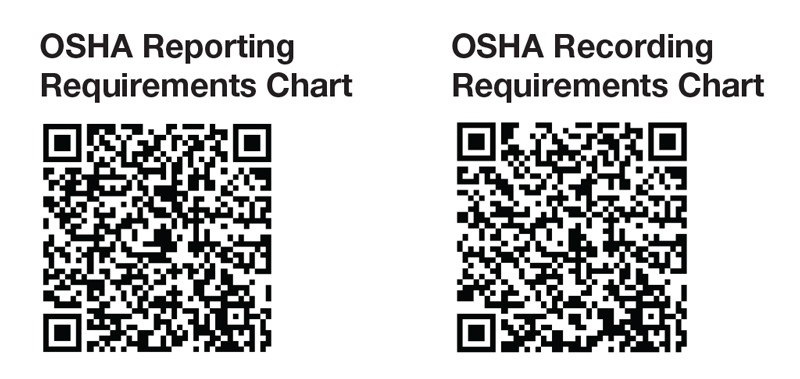By Alan Rothenbuecher, Pete Wade and Ryan Poor
Ice Miller Partners
In manufacturing facilities, accidents happen and even the best-laid plans can go awry. OSHA requires most employers to record those occupational injuries and illnesses. In addition, certain types of occupational injuries and illnesses require a report be sent to OSHA within a defined time frame.
With OSHA’s vast array of regulations, it can feel as if figuring out which apply to your business can take specialized expertise. To help simplify the process, Ice Miller has published two charts: OSHA Recording Requirements and OSHA Reporting Requirements. These charts attempt to simplify the decision-making process when work-related accidents or illnesses take place.
OSHA Reporting Requirements
When the reporting requirements are triggered, companies are required to notify OSHA of work-related fatalities within eight hours. Work-related in-patient hospitalizations of even a single employee, or an amputation or loss of an eye require notification within 24 hours.* These reports can be made by phone to the local area office, the National Office or state plan office (if applicable).
As defined by the reporting requirements, an employer must report the following information:
- Establishment name
- Location of work-related incident
- Time of work-related incident
- Type of reportable event (i.e., fatality, in-patient hospitalization, amputation or loss of eye)
- Number of employees who suffered the event
- Names of the employees who suffered the event
- Contact person and his/her phone number
- Brief description of the work-related incident
OSHA Recording Requirements
Less critical work-related injuries or illnesses often trigger a recording requirement. If your business is required to keep records of occupational injuries and illnesses, the OSHA recording requirements form will assist in completing the OSHA 300 log.
Injuries include cases such as, but not limited to, a cut, fracture, sprain or amputation. Illnesses include both acute and chronic illnesses, such as, but not limited to, a skin disease, respiratory disorder or poisoning. Medical treatment would be any course of action outside of first aid, observation or counseling and diagnostic procedures, such as X-rays or blood work.**
First aid for OSHA recordkeeping includes the following:
- Use of nonprescription medication at nonprescription strength (nonprescription medication at prescription strength is considered medical treatment for recordkeeping purposes)
- Tetanus immunizations (other immunizations are considered medical treatment)
- Cleaning, flushing or soaking surface wounds
- Use of wound coverings, such as Band-Aids and gauze, butterfly bandages or Steri-Strips (use of wound closing devices are considered medical treatment)
- Use of hot or cold therapy
- Use of non-rigid means of support (use of rigid support or immobilization is considered medical treatment)
- Use of temporary immobilization devices used to transport victims
- Drilling of fingernails or toenails to relieve pressure or draining fluid from a blister
- Use of eye patches
- Removal of foreign bodies from eye using only irrigation or cotton swab
- Removal of splinters or foreign material from areas other than the eye by irrigation, tweezers, cotton swabs or other simple means
- Use of finger guards
- Use of massage therapy (physical therapy or chiropractic treatment are considered medical treatment)
- Drinking fluids for relief of heat stress
Conclusion
In the experience of Ice Miller staff, the first hours after a serious accident are stressful and often prone to confusion and speculation. In addition, people may blame themselves and want to take responsibility – even when they have none. Sorting through the real facts and legal requirements after a serious injury or industrial death is a challenging, but critical task. The QR codes included here link to the quick charts for easy download and use.
*Note that certain states have adopted different, more stringent reporting requirements.
**An injury or illness is considered to be work-related if an event or exposure in the work environment either caused or contributed to the resulting condition or significantly aggravated a pre-existing injury or illness. Work-relatedness is presumed for injuries and illnesses resulting from events or exposures occurring in the work environment, unless an exception in §1904.5(b)(2) specifically applies. If the injury or illness is not a new case, update the recorded injury or illness entry if necessary.
The charts noted are for general information purposes only. Specific recording requirements can be found in OSHA Standard 1904. For additional information, contact Ice Miller’s Labor, Employment and Immigration group or email Alan Rothenbuecher at har@icemiller.com.
This publication is intended for general information purposes only and does not and is not intended to constitute legal advice. The reader should consult with legal counsel to determine how laws or decisions discussed herein apply to the reader’s specific circumstances.



